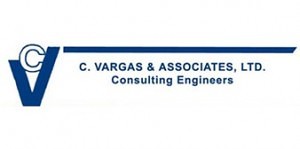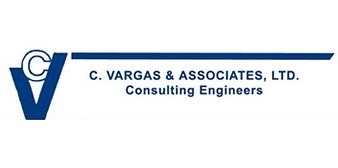According to a recent article published by the National Institute for Occupational Safety and Health (NIOSH) approximately 40,000-60,000 people are employed by shooting ranges across the country. It’s also estimated that approximately 20 million people participate in target shooting every year (NSSF). With shooting sports becoming more and more popular, it is no surprise that lead exposure and the associated risks and health hazards is a popular topic when talking about indoor shooting ranges. Whether a person is a current or potential shooting range owner, a range employee, or a first time or experienced gun owner, understanding the basics of lead exposure and knowing where to find more information is extremely helpful.
WHY IT MATTERS
Lack of proper range maintenance is a liability issue for the range owner. Any company working in a lead contaminated range has to follow the law, or it becomes at risk for lawsuits or fines. Neglecting manufacturer specifications with lack of proper bullet trap inspections can be a liability. Neglecting ventilation filters and having positive pressure in the range can also be an issue. This can overexpose customers and contaminate adjacent areas. Being in violation of regulations and putting employees in harmful situations can be extremely costly. A range can be fined millions of dollars for overexposing employees to lead and violating health codes. In addition to this, there is also loss incurred from shutting down the range for the decontamination and inspection process if there are lead problems.
Poor maintenance is not only a potential liability; it’s also a health hazard. Lead can only enter the body through inhalation or ingestion. Once it enters the body, lead can cause poisoning which can affect the nervous and digestive systems, as well as the brain. Some side effects or symptoms include abdominal pain, headaches, difficulty thinking or concentrating, loss of appetite, or in severe cases it may cause a seizure or coma. The potential health issues associated with lead can be overwhelming, but following regulations and best practices can negate these risks.
WHERE TO FIND INFORMATION
With so much information available on the topic, it can be hard to know what is accurate and reliable. The National Institute for Occupational Safety and Health (NIOSH) along with the Environmental Protection Agency (EPA) and the Occupational Safety and Health Administration (OSHA) have developed health regulations and standards that each shooting range must meet. NIOSH has a section of their website specifically devoted to lead exposure and indoor shooting ranges. They recently created a Twitter account (@NIOSHFir_Ranges) to further educate the industry and consumers about exposure to lead and other hazards. All of the information they publish is pertinent information for those who manage ranges, or for the everyday customer looking for more information.
It’s also important a range owner is aware that every employee needs to undergo initial testing for lead exposure. There are three different levels of testing, and each one of them is different depending on the employee’s job responsibilities. For example, an employee who works in the retail area of the range needs to be tested far less than the employee who deals directly with lead. Companies who specialize in lead removal and recycling can provide more detailed information about the employee training and testing process.
RELY ON THE EXPERTS
What can be done to avoid the stress, potential legal issues, and health hazards of lead exposure? Lead maintenance can seem like an overwhelming aspect of building and maintaining a range. But it doesn’t have to be this way. Luckily, there are experts in the industry who are ready and available to answer questions and take on the challenges associated with lead. Ventilation companies make it their business to meet all health regulations, ensuring clean air for customers and range employees. Companies also specialize in lead removal and will make sure a range is safe to be operating, while also offering their expertise regarding the necessary equipment and training for employees. When employees have close contact with lead, there is no such thing as too much research and training.
Action Target’s Range Ventilation Systems lead in the industry when it comes to ventilation. We design each ventilation system with specialized custom components that are manufactured and installed on a per-job basis to meet the specific needs of each individual range.
Best Technology Systems: Best Technology Systems (BTS) was started in 1994 and specializes in lead exposure and maintenance for indoor and outdoor shooting ranges. They monitor range employees for lead exposure and properly document the findings. They also recover and recycle lead while remaining compliant with all government regulations, and make sure the range staff is not at risk. BTS is also familiar with the industry’s bullet traps and can also make sure the trap is up to manufacturer’s specifications.
Action Target offers the best in shooting range equipment. There are hundreds of things to take into consideration when building a shooting range, but your top priority should always be safety. Before anything else, make sure your range is going to be safe for your customers, your employees, and the environment. Our team of knowledgeable Range Consultants is available to answer any questions and guide you through the entire process. Contact the consultant in your area today for more information.







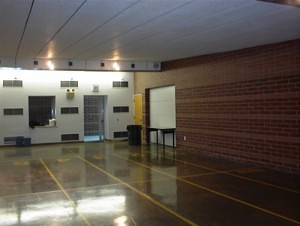 Training with firearms requires developing proficiency at the weapons tactical or practical longest distances. That must be learned first. Close in rapid tactical drills come in second. However, if perceived recoil is different between a 100-grain and 140-grain bullet, a legal argument is again created.
Training with firearms requires developing proficiency at the weapons tactical or practical longest distances. That must be learned first. Close in rapid tactical drills come in second. However, if perceived recoil is different between a 100-grain and 140-grain bullet, a legal argument is again created.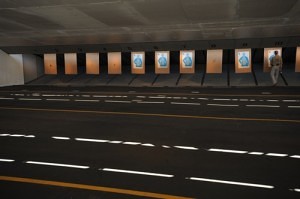 The big break in ammunition technology, with respect to LEO training and environmental concerns, has only been the development of the lead heavy metal free reliable primers. Air sampling conducted at live shoots, with various totally encapsulated projectiles and lead free primer products is reported to have consistently proven to totally eliminate breathable lead exposure at the firing line.
The big break in ammunition technology, with respect to LEO training and environmental concerns, has only been the development of the lead heavy metal free reliable primers. Air sampling conducted at live shoots, with various totally encapsulated projectiles and lead free primer products is reported to have consistently proven to totally eliminate breathable lead exposure at the firing line.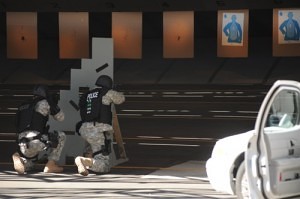 If a department is unwilling or unable to implement the lead management practices that we have known of for 12 years now, then perhaps they should use non-lead “green ammunition”. It should be realized though that the use of green ammunition is only one of the many alternative Best Management Practices for shooting ranges. It is not, however, the panacea and their use will have unintended consequences. The problems with non-lead alternative projectiles go far beyond the cost of the round. There are the ballistic performance shortcomings as previously discussed and yet unknown health and environmental risks. We know the risks for lead and know how to handle them.
If a department is unwilling or unable to implement the lead management practices that we have known of for 12 years now, then perhaps they should use non-lead “green ammunition”. It should be realized though that the use of green ammunition is only one of the many alternative Best Management Practices for shooting ranges. It is not, however, the panacea and their use will have unintended consequences. The problems with non-lead alternative projectiles go far beyond the cost of the round. There are the ballistic performance shortcomings as previously discussed and yet unknown health and environmental risks. We know the risks for lead and know how to handle them.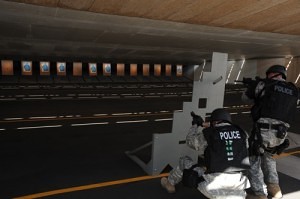 The Federal Law Enforcement Training Center, FLETC, has committed to 16 million rounds per year and is “the driving force behind the development of lead alternative ammunition”, but FLETC also has also acknowledged that lead alternative ammunition technology is NOT acceptable for duty use; they express a desire and opinion that it will be someday. FLETC developed their lead abatement strategy because of citations by EPA prior to the EPA’s development of lead Best Management Practices (BMP’s) and an EPA action due to FLETC’s past problems managing lead.
The Federal Law Enforcement Training Center, FLETC, has committed to 16 million rounds per year and is “the driving force behind the development of lead alternative ammunition”, but FLETC also has also acknowledged that lead alternative ammunition technology is NOT acceptable for duty use; they express a desire and opinion that it will be someday. FLETC developed their lead abatement strategy because of citations by EPA prior to the EPA’s development of lead Best Management Practices (BMP’s) and an EPA action due to FLETC’s past problems managing lead.